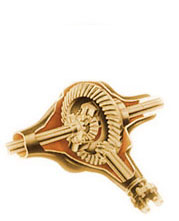
Energy is transmitted from a power source to a terminal point through Gears that change speeds, direction and torque. Automobile Transmission is generally of two types, namely manual transmission and automatic transmission. In manual transmission system, driver drives the vehicle with the help of a hand-operated gearshift and a foot operated clutch. Where as automatic transmission, automatically changes the gears with regard to speed of the vehicle. The primary components of automatic transmission include planetary gear sets, hydraulic system, seals and gaskets, torque converter, governor, modulator and computer. Lubricant provides two primary benefits: to lubricate the teeth and to remove heat generated from the gear operation. If the correct lubricant is selected for use in a gear system it will provide slip-free power transmission at high mechanical efficiency, with good reliability, low maintenance, and long life.

Gear oil is made specifically for lubrication of transmission components.High viscosity of gear oil ensures transfer of lubricant throughout the gear train. This is necessary since the devices needing this heavy oil do not have pumps for transferring the oil with only a portion of the lowermost gears bathed in an oil sump. Most lubricants for manual gearboxes and differentials are hypoid gear oils. These contain extreme pressure additives. Gear oils are classified by the American Petroleum Institute using GL ratings. For example, most modern gearboxes require a GL4 oil, and separate differentials (where fitted) require a GL5 oil. Automatic transmission fluid (ATF) is used in vehicles to meet the special requirements of an automatic transmission, such as valve operation, brake band friction and the torque converter as well as gear lubrication. Transmission oil must meet standards that are set by Detroit Diesel Allison series, and vehicle manufacturer’s reccomendation.